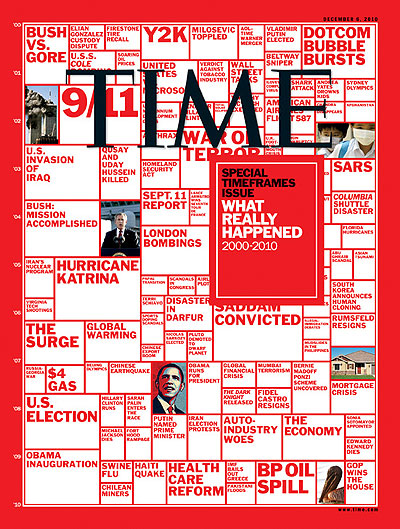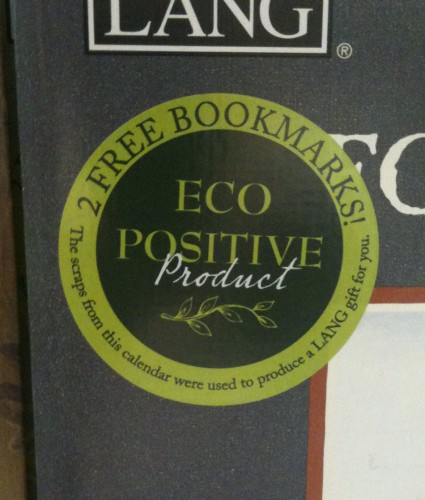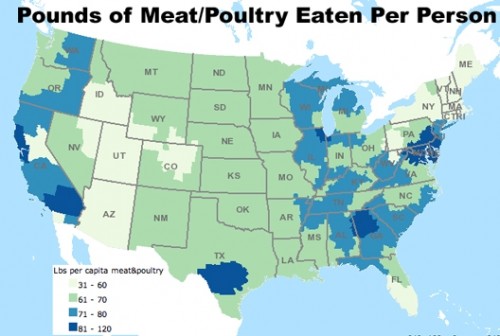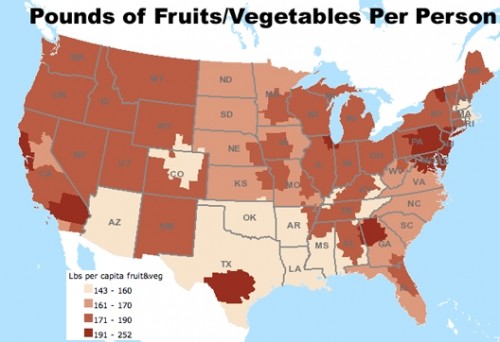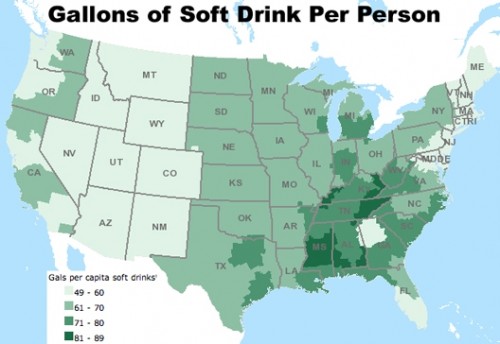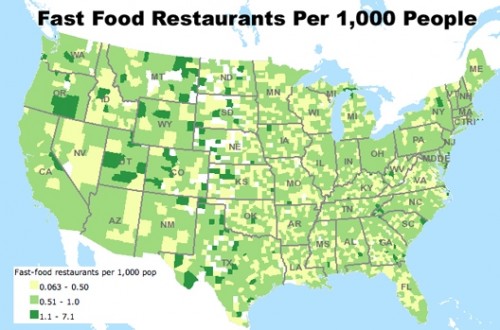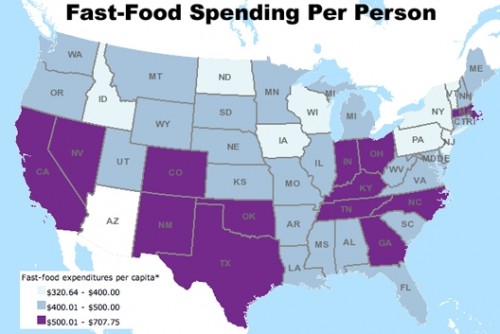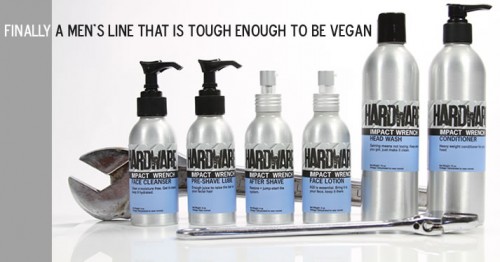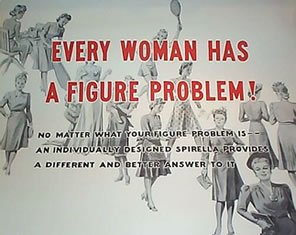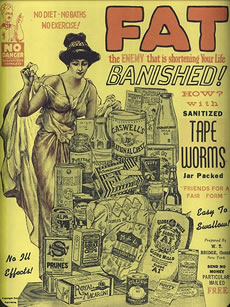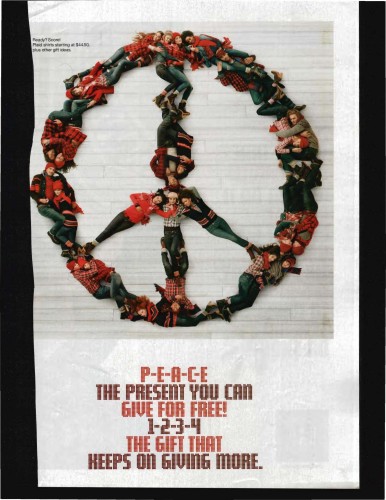Well, it’s 2011. Sometime this year, the global population will pass the 7 billion mark. Jessica B. sent in this video, from National Geographic, that puts that into some perspective, showing the rapid increase in the pace of population growth over time:
Time magazine has an end-of-the-decade issue with a cover, sent in by Dmitriy T.M., that summarizes what they consider major events between 2000 and 2010:
The stories illustrate the way that, as ESPN puts it, “only bad news counts as news.” Of the 118 items chosen by the editors as “what really happened” over the last ten years, a few are what most people would probably see as relatively positive or benign (such as achievements in sports and the rescue of the Chilean miners) and others would probably fall into the “neutral” category (“U.S. Election” doesn’t say anything about the election — or, for that matter, even indicate which of the various elections that occurred during that time frame it refers to). And a few are just…odd. “AOL-Time Warner Merger” is one of the most important events of the decade? And “The Dark Knight Release” was selected as the most significant pop-culture-related event? Um…okay.
But the majority of items are clearly negative/scary, or at least I think the editors assume they’d be seen that way: BP oil spill, a space shuttle disaster, various diseases, several bombings, “Disaster in Darfur,” the Haiti earthquake, a tire recall, and various topics related to economic problems. According to the ESPN post,
The Time selection says nothing about major positive trends such as declining international military spending (rising U.S. spending is the exception to the rule), declining teen pregnancy rates, declining crime, declining accidental deaths. “U.K. foot and mouth crisis” [a livestock disease]…was cited, but nothing said about declining cancer rates. “Shark attack” was cited, but nothing was said about the dramatic rise in living standards in most of the developing world. (“Overall, poor countries are catching up with rich countries” on nearly all central measures, according to this important new [United Nations] report.)
The post continues, “Yes, journalists have always loved bad news, and have long pretended good news doesn’t exist.” That’s going a bit far. For instance, local newspapers often take part in what Harvey Molotch described as the “growth machine,” a collection of organizations, institutions, businesses, political leaders, and influential community members that support economic growth. Media outlets may contribute to such boosterism by running positive stories and providing space (in op-eds, etc.) for predominantly rosy depictions of the community.
That said, media scholars do criticize news outlets for focusing so much attention on stories that are sensationalistic or that imply the world is an incredibly dangerous, scary place, and leading the public to have quite unrealistic perceptions of actual sources of risk. And Time‘s editors play into this with their selection of the most significant stories of the past decade.
I recently saw a great example of greenwashing — that is, marketing a product as eco-friendly based on questionable or rather superficial characteristics of the production process. This decal was on the front of a calendar, touting it as “eco-positive”:
What was eco-positive (a term that has no real meaning or standards) about it? Was it made from recycled paper? No. Maybe some statement about non-toxic ink? Nope. It’s eco-positive because they used the scraps from producing the calendar to make you a very special gift…two bookmarks tucked inside the calendar.
I’m all for using scrap material, but that alone seems to be a pretty minor detail upon which to then market the entire product as an “eco-positive” one, especially given that paper scraps from manufacturing processes are often reused already (notice how often paper products say they’re recycled from “pre-consumer” waste).
Dmitriy T.M. sent in this Dodge ad that associates cars with liberty and, by extension, America itself:
There are a few problems with this conflation of Dodge with patriotism and Americanness. For one, Dmitriy says,
Washington ( as the general) would’ve never been leading the charge. The commanders always stayed back ( preferably on the high ground) so that they could observe the progress and give commands ( and get away as quickly as possible in case of a loss).
So the image of the brave leader charging ahead of his troops into battle is misleading.
In addition, many Dodge vehicles aren’t made in the U.S. So Dodge wants us to associate its brand with the U.S. in a symbolic way that makes irrelevant, and invisible, where the car is made. What’s important is that Dodge, founded in the U.S., builds cars that represent a masculinized, tough version of “freedom,” and of course, freedom is uniquely American. It reminds me a lot of the symbolic identification Pabst Blue Ribbon drinkers often feel with blue-collar workers, an identification that has little to do with the actual production process.
Cross-posted at Jezebel.
James B., a student at Rensselaer Polytechnic Institute, let us know about a series of maps at Daily Yonder that show consumption of various food and drinks across the U.S. Per capita meat consumption:
Fruits and vegetables:
You might expect those two maps to be near mirror images — that in places where people eat more fruits and vegetables, they’re eating less meat, and vice versa. But notice that in fact, many places stand out as having particularly high consumption of both categories of food — for instance, the big dark splotches in Texas and Georgia show up on both maps, as does a large region in Pennsylvania, New Jersey, Maryland, and northern Virginia. Northern Colorado, and all of Arizona, on the other hand, rank in the lowest category for both meat and fruits/veggies. So for our Coloradan and Arizonan readers: what are y’all eating?
Here’s the map for soda:
Concentration of fast food restaurants:
For the record, “fast-food restaurant” is defined according to the USDA’s classification:
Limited-service restaurants include establishments primarily engaged in providing food services (except snack and nonalcoholic beverage bars) where patrons generally order or select items and pay before eating. Food and drink may be consumed on premises, taken out, or delivered to the customer’s location. Some establishments in this industry may provide these food services in combination with alcoholic beverage sale.
And how much are we spending in those fast-food establishments?
The maps are based on data from the USDA Economic Research Service’s interactive food atlas, which provides a wealth of information on food availability, where Americans buy their food, physical activity levels, health indicators, and so on.
In another example of masculinizing items associated with women to make it ok for men to use them, Hope H. let us know about Hardware, a line of vegan hair and body products. The company seems to have taken Hyperbole and a Half’s satire seriously:
All the elements are there: images of tools to make sure it’s clear these are hard-working manly products, the association of men with toughness, and product names that reference hard physical labor. The different product lines include Impact Wrench, Angle Grinder, Jack Hammer, and Tool Belts (aka, gift certificates). The descriptions also refer to tools and cars:
Every perfectly balanced machine needs maintenance. No this is not a sales pitch mate. You would not skip an oil change or two in a 67 Shelby Mustang now would you.
Thus, using these non-animal-ingredient-based products isn’t about being girly. It’s about maintenance, which all machines need!
For more examples, see our posts on hair products labeled things like “maneuver,” “retaliate,” “stand tough,” “work hard,” and “bulk up”; make-up for men named with terms like“power face mask,” “confidence corrector,” “mission balm,” “battle scars repair cream,” “cream me face base,” and “blo-job bronzing powder.”; and shaving your pubes marketed with the suggestion that it will make your penis look bigger.
Anna J., a student at Rensselaer Polytechnic Institute, sent in this vintage ad for Spirella girdles that provides a good reminder of how women are repeatedly told that our bodies are never, ever acceptable as they are, but are always in need of “improvement” through the use of products (found at The Great Fitness Experiment):
But hey, if you don’t feel like wearing a girdle, perhaps some tapeworms are your solution:
UPDATE: Reader Syd says the tapeworm ad is a hoax, though other readers disagree, and the practice itself definitely occurred. I don’t know how to find out, but since there’s at least some question about it, I’d take it with caution. However, commenter Angela pointed out that Tyra Banks recently had a story on tapeworms on her show:
As Anna points out, “It’s really interesting how ads have changed over time, but the expectation of culture that women be dieting has remained the same.” Certainly more people wouldn’t tell women to eat a tapeworm — sanitized or not — these days, but plenty of questionable products out there still promise weight loss with “no diet” and “no exercise,” and my bet is you could pick up any women’s magazine currently on the shelf and get a range of advice on how to make sure you lose any weight you might have gained over the holiday season.
I saw this ad last year but forgot to post it. What I find interesting is the way that “peace” has been both stripped of any real meaning and presented as something easy to achieve:
So while a plaid shirt might cost you $44.50, peace is free. This makes sense only if “peace” has been turned into a completely apolitical feel-good abstraction, as opposed to an end result of social and political processes that require effort and may or may not be particularly cheap. But “peace” is, here, entirely empty of political meaning, so much so that the company could use the word in an ad without worrying that they would be accused of making a political statement about, say, either of the two wars the U.S. is currently engaged in, or the Israel/Palestine conflict, or any number of other situations that a politicized meaning of peace might bring to mind.


